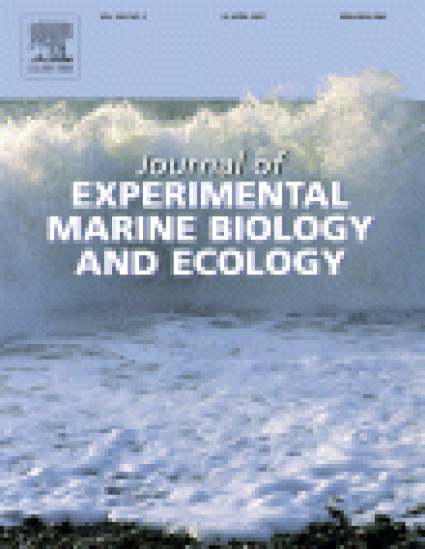
Article
Energy Metabolism in the Tropical Abalone, Haliotis asinina Linné: Comparisons with Temperate Abalone Species
Journal of Experimental Marine Biology and Ecology
(2007)
Abstract
The abalone, Haliotis asinina, is a large, highly active tropical abalone that feeds at night on shallow coral reefs where oxygen levels of the water may be low and the animals can be exposed to air. It is capable of more prolonged and rapid exercise than has been reported for temperate abalone. These unusual behaviours raised the question of whether H. asinina possesses enhanced capacities for aerobic or anaerobic metabolism. The blood oxygen transport system of H. asinina resembles that of temperate abalone in terms of a large hemolymph volume, similar hemocyanin concentrations, and in most hemocyanin oxygen binding properties; however, absence of a Root effect appears confined to hemocyanin from H. asinina and may assist oxygen uptake when hemolymph pH falls during exercise or environmental hypoxia. During exposure to air, H. asinina reduces oxygen uptake by at least 20-fold relative to animals at rest in aerated seawater, and there is no significant ATP production from anaerobic glycolysis or phosphagen hydrolysis in the foot or adductor muscles. This slowing of metabolism may contribute to survival at lower water oxygen levels than normally encountered by most temperate abalone. While crawling speeds of H. asinina in water are not exceptionally high, an aerobic expansibility of 5.5-fold at speeds less than 20% of maximum is more than 2.7-fold greater than reported for several temperate abalone. The high aerobic expansibility also supports the enhanced frequency and duration of flipping behaviour without recourse to the additional inputs from anaerobic glycolysis required by other abalone. Metabolic profiles of foot and adductor muscles of H. asinina are similar to those of other abalone. Common features are low activities of enzymes unique to aerobic ATP production, relatively high activities of arginine kinase, tauropine and D-lactate dehydrogenase as the predominant pyruvate reductases, and low intracellular pH buffering capacities. It is concluded that the exceptional abilities of H. asinina for prolonged and rapid exercise are supported by higher rates of aerobic metabolism rather than any enhanced capacity for anaerobic muscle work. It is unexpected, and instructive, that the exceptional aerobic expansibility is not apparent in obvious adjustments of the blood oxygen delivery system or muscle properties associated with aerobic ATP production. The absence of a hemocyanin Root effect, and the extent to which both aerobic and anaerobic metabolism can be reduced may be special features that assist prolonged exercise and survival of H. asinina when environmental oxygen becomes limiting.
Keywords
- Abalone,
- Enzyme activity,
- Exercise,
- Hemocyanin,
- Respiration
Disciplines
Publication Date
April 16, 2007
Publisher Statement
Copyright © 2007 Published by Elsevier B.V. doi:10.1016/j.jembe.2006.09.005
Citation Information
Deborah A. Donovan, John Baldwin, J. P. Elias and R. M.G. Wells. "Energy Metabolism in the Tropical Abalone, Haliotis asinina Linné: Comparisons with Temperate Abalone Species" Journal of Experimental Marine Biology and Ecology Vol. 342 Iss. 2 (2007) Available at: http://works.bepress.com/deborah_donovan/12/
